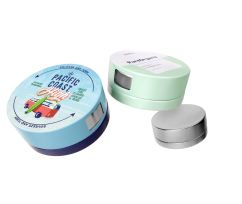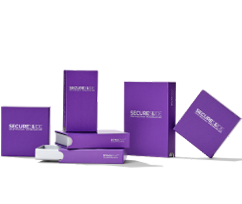What Is a Heat Sealer and Why Is It Important?
Product packaging often comes down to choosing materials and creating designs that appeal to customers, considering everything from barrier properties to branding.
But a part of the equation that often goes overlooked is how packages are sealed and what goes into ensuring a truly impermeable packaging system. This is made possible with the power of a heat sealer, a versatile tool that allows quick, accurate, and effective seals to be formed in various applications.
Let’s explore what heat sealers do in the context of packaging technologies and find out how this method stacks up with others in terms of simplicity, effectiveness, and overall results.
What Is a Heat Sealer?
Heat sealers come in many forms and are designed for specialized use cases, but the general function is the same across the board.
These electronic machines generate high heat in bars, prongs, forks, or surfaces to interface with thermoplastics (and other materials) and create a bond between two distinct components.
Depending on the type of plastic and the intended shape and function of the product, heat sealers will have various designs and specifications that can be highly customized and coordinated in the context of industrial setups of varying scope and scale.
Function
Since thermoplastics are designed to morph and mold with exposure to specific high temperatures, heat sealers function by achieving that heat and applying enough force to create effective seals.
These machines are used in a wide range of industrial applications, from consumer electronics to high-grade medical devices, household products, storage systems, and packaging solutions.
In short, if you own a product with a proprietary design containing thermoplastics, laminates, or other polymer-based components, you’ve likely benefited from heat sealers at some point. Even one-time-use products and packages are commonly sealed with these machines, making their applications nearly universal.
Size
The size of heat sealers can vary widely depending on the intended application and the machines’ setting.
Massive, industrial-sized heat sealers can take up hundreds of square feet and require more power than a supercomputer, while hand-held devices are as lightweight and nimble as a power drill or a staple gun.
The main advantage of larger machines is the greater volume of output required at high industrial production levels. Some factories require thousands of seals to be performed rapidly and demand superior power, accuracy, and minimal hands-on involvement from workers.
The seals formed by these large-scale machines also tend to be more durable and long-lasting thanks to the higher heat and greater amounts of pressure applied.
Alternatively, mid-size and hand-held machines are better suited for smaller production settings, small businesses, and home operations. The disadvantage here is that seals tend to be weaker, and the integrity of the product may be compromised when tested at upper limits.
Speed
Time is money, and the speed of a heat sealer makes all the difference for business owners. How fast a seal is formed depends on a few factors. However, not all are related to the sealer itself.
For instance, certain types of thermoplastic materials require higher temperatures and more pressure, while others do not take much heat or effort. The width and thickness of the heating element will also determine how long it takes to get up to the proper temperature, which factors into the total time spent.
It’s always a game of tradeoffs with heat sealers when it comes to speed and efficacy. Larger units may take longer to power up but can churn out higher volumes of seals in far shorter timespans.
On the flip side, portable sealers will heat up fast but require more time and attention from the user as they ensure an even, stable seal. With more technique and time required, fewer seals can be performed in a set period of time.
Width of Seal and Packaging Material
With so many heating elements and packaging materials to choose from, we see a near-infinite number of combinations made possible with modern heat sealers.
Some elements are flat and broad, creating wide seals that hold strong under the most challenging conditions. Other seals are thin and easily torn for a smooth and intuitive user experience. These are typically formed with thin, rounded heating elements.
There are more ways to create seals and achieve your unique packaging or product goals without requiring large industrial investments.
How Does a Heat Sealer Work?
While every heat sealer has a different look, feel, and function, they all tend to work in the same fundamental way.
With a direct power source, the heating elements are brought up to the desired temperature, which can take several minutes to an hour, depending on the size of the machine.
From there, thermoplastics are organized in the desired configuration and placed into the machine at the proper angle to form a seal.
The heating elements are then manually clamped down with the desired amount of pressure, which, in combination with heat, welds the two material components together as they are moved in tandem through the machine.
Operators can then cut the material at the intended endpoint to achieve the exact shape as specified in the product description.
What Are the Different Types of Heat Sealers & Why Does It Matter?
The most common type of heat sealer is a mid-size tabletop sealer with an average rate of 15 ppm. These are used in smaller operations and allow producers to accurately form seals in a safe, efficient manner without taking up too much space or power.
Larger horizontal band sealers require more room and power, but can perform at more than twice the rate of tabletop machines.
On the smaller end of the spectrum are portable handheld sealers, which tend to produce in the 10 PPM range and may not offer the same level of consistency and accuracy.
What Is the Difference Between an Impulse Sealer and a Heat Sealer?
While direct heat sealers take time to warm up and remain hot for the entire duration of the sealing process, impulse sealers only use electricity when the unit is applying a seal.
This makes for a more economical and safe sealing process, but certain materials cannot be sealed effectively with impulse sealers due to their reduced energy output.
What Is the Heat-Sealing Process?
Every machine has different instructions and unique options and settings depending on how the device is engineered.
But no matter the size or scope of the heat sealing project, the process follows the same general steps. As always, manufacturers must use best practices to ensure optimal, consistent product outcomes.
Can You Use an Iron Instead of a Heat Sealer?
An everyday iron may be hot, but it’s no substitute for a specialized direct heat sealer. Irons are too wide, too unwieldy, and difficult to control when creating precise and even seals.
Thankfully, heat sealers can be obtained without spending a fortune, or companies can procure packaging products from trusted producers with the best equipment available.
Conclusion
Heat sealers are amazing, versatile modern machines that let us create products that were never thought possible. Discover the best heat-sealed packaging systems and see how a masterful seal can make all the difference, from shipping and branding to customer satisfaction.
Sources:
What Is Impulse Sealing | About Mechanics



